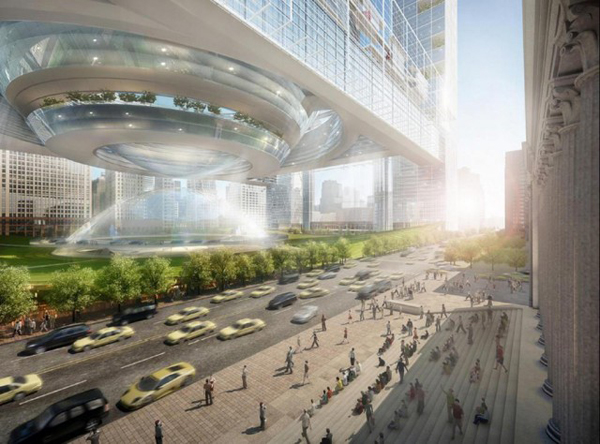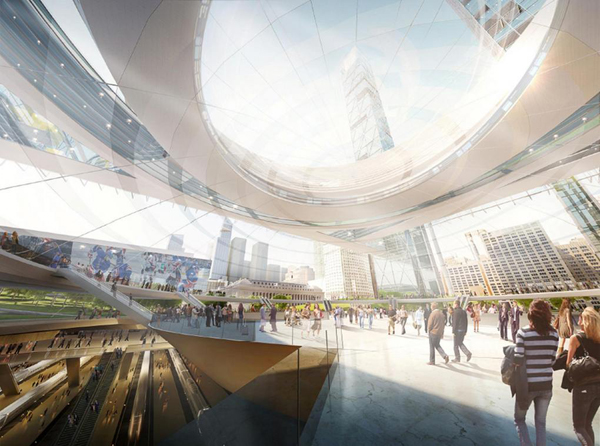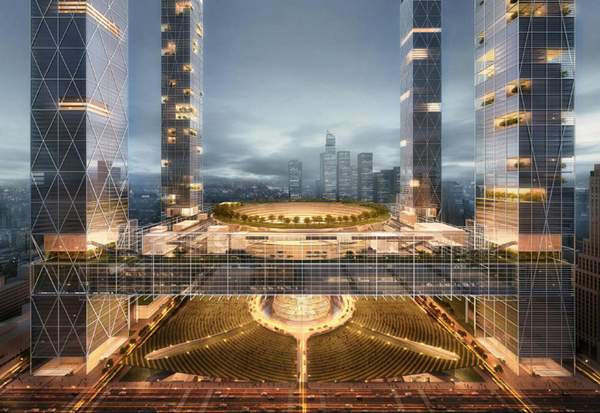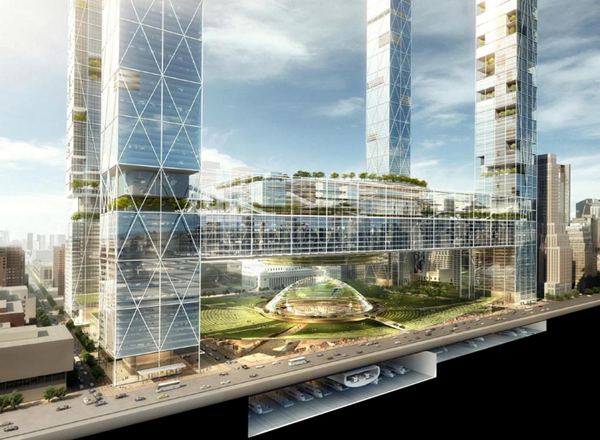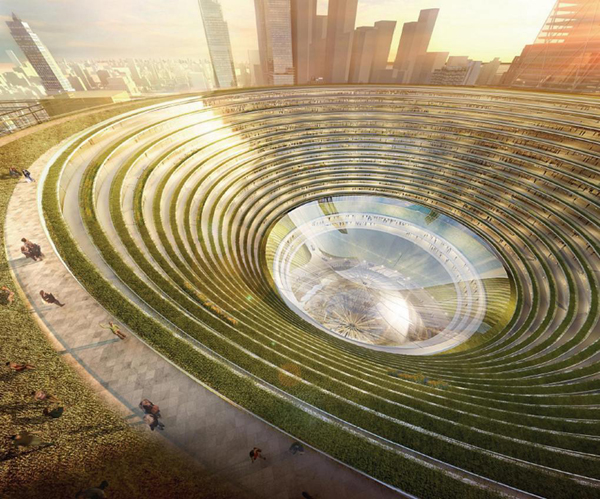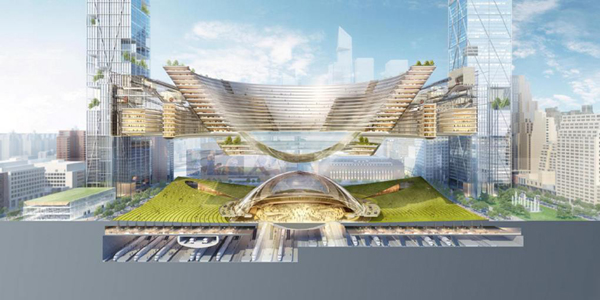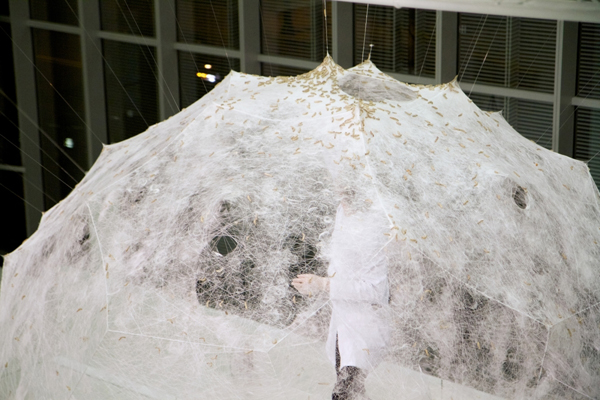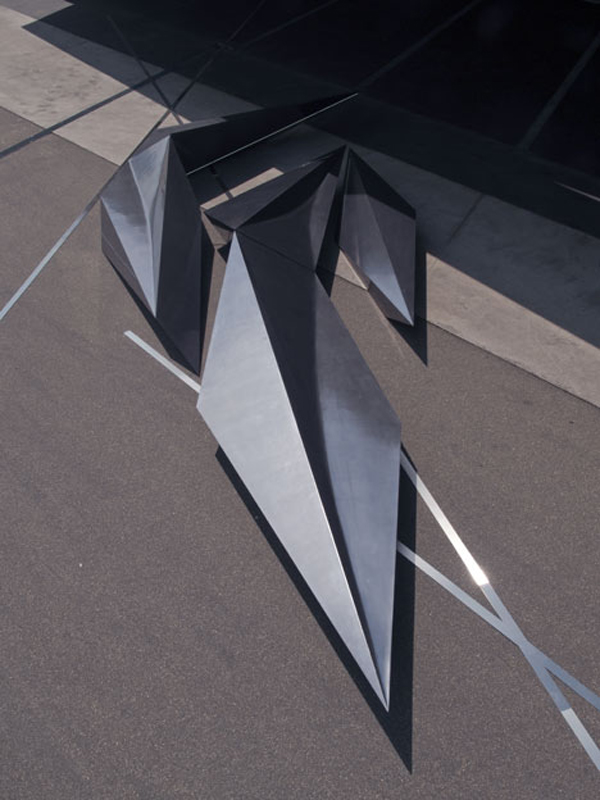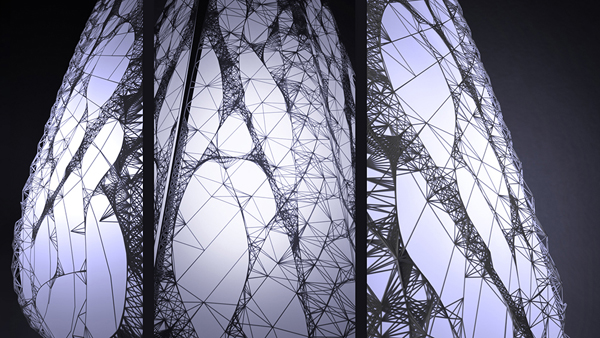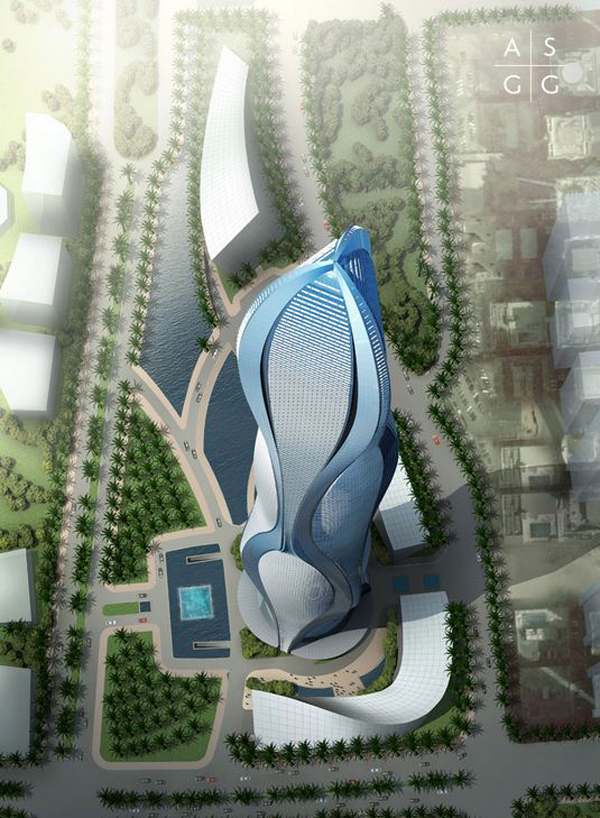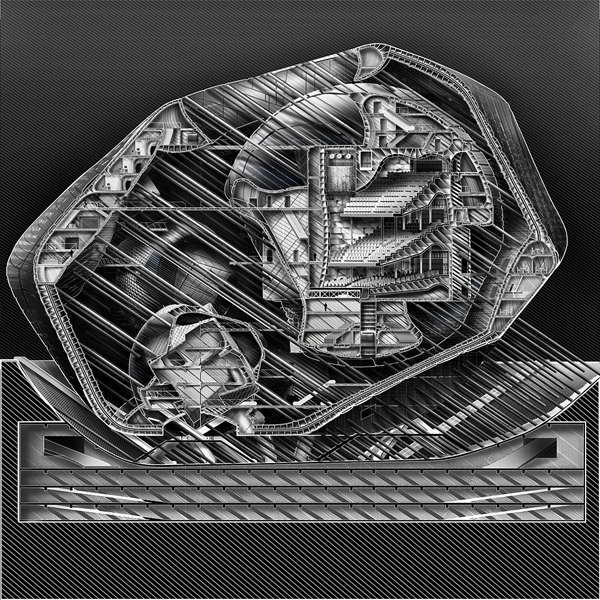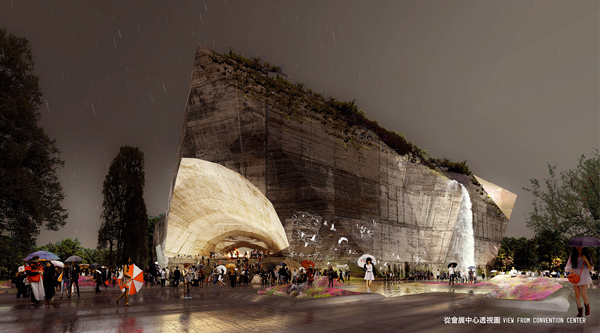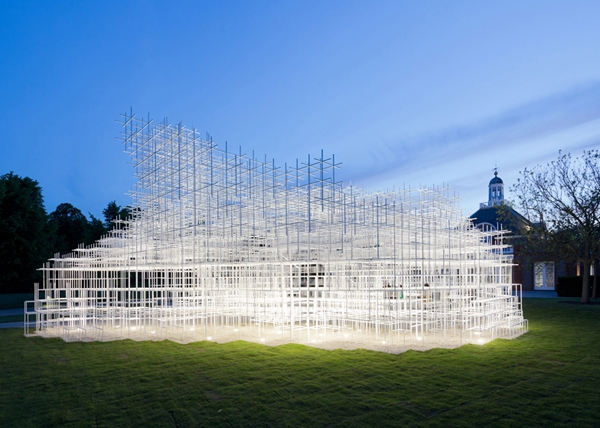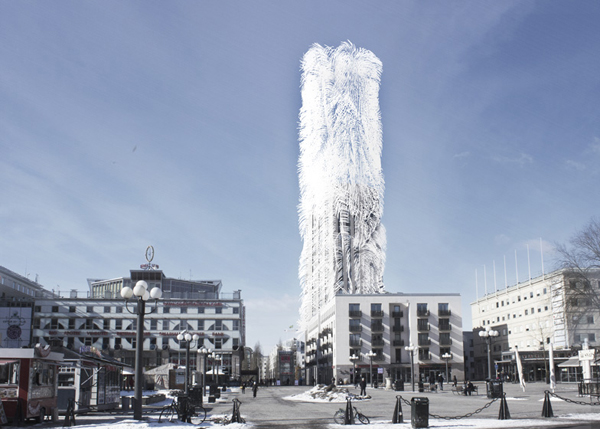Four architectural practices were challenged recently to re-envision New York’s Penn Station and Madison Square Garden, in order to create more livable city through intelligent urban planning and design. Four designs have been revealed, proposing fresh and improved biggest transit hub in the western hemisphere, and are focused on smart solutions for pedestrians as well as on the impact of built form to the transit access.
Skidmore, Owings & Merrill LLP (SOM), the renowned architecture, engineering, interiors and urban-planning firm, revealed its proposal. SOM was invited to contribute because of its long history of working in Manhattan, its wide-ranging expertise on extraordinarily complex sites and issues. Their plan dramatically expands the transit capacity at Penn Station – it calls for the expansion of Penn Station’s footprint by two additional blocks, in order to accommodate high-speed rail lines for the Northeast Corridor, expanded commuter rail service for the entire tri-state area, and direct rail connections to JFK, LaGuardia and Newark Airports.
The vision for the very station is very intuitive and open – the transparent Ticketing Hall is placed at the center of the site, surrounded by the radial pedestrian connections to the city. Two concourses directed north-south seamlessly enable passengers to move from ground level to level below.
The proposed design fully exhausts the potential air rights yet preserving the full four block ground-plane, for public use. The architects at SOM believe that, in order to reach its full unrealized potential, the site must be the civic heart of Midtown West. Aiming to optimize one of the largest multi-modal stations in the world, SOM provides to build public Park, four times larger than Bryant Park, a commercial development the size of Rockefeller Center, a city of Culture larger than Lincoln Center, and a residential neighborhood the size of Tudor City.

